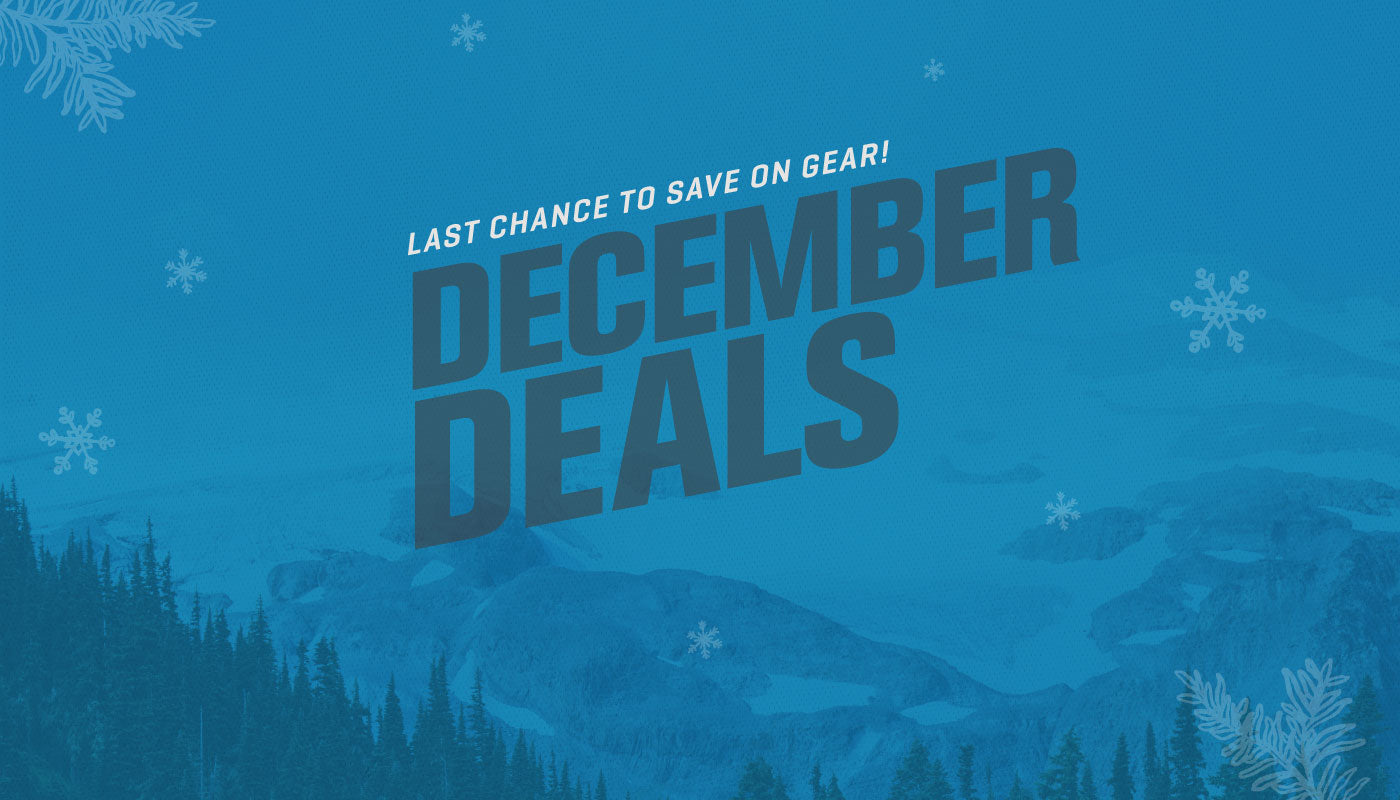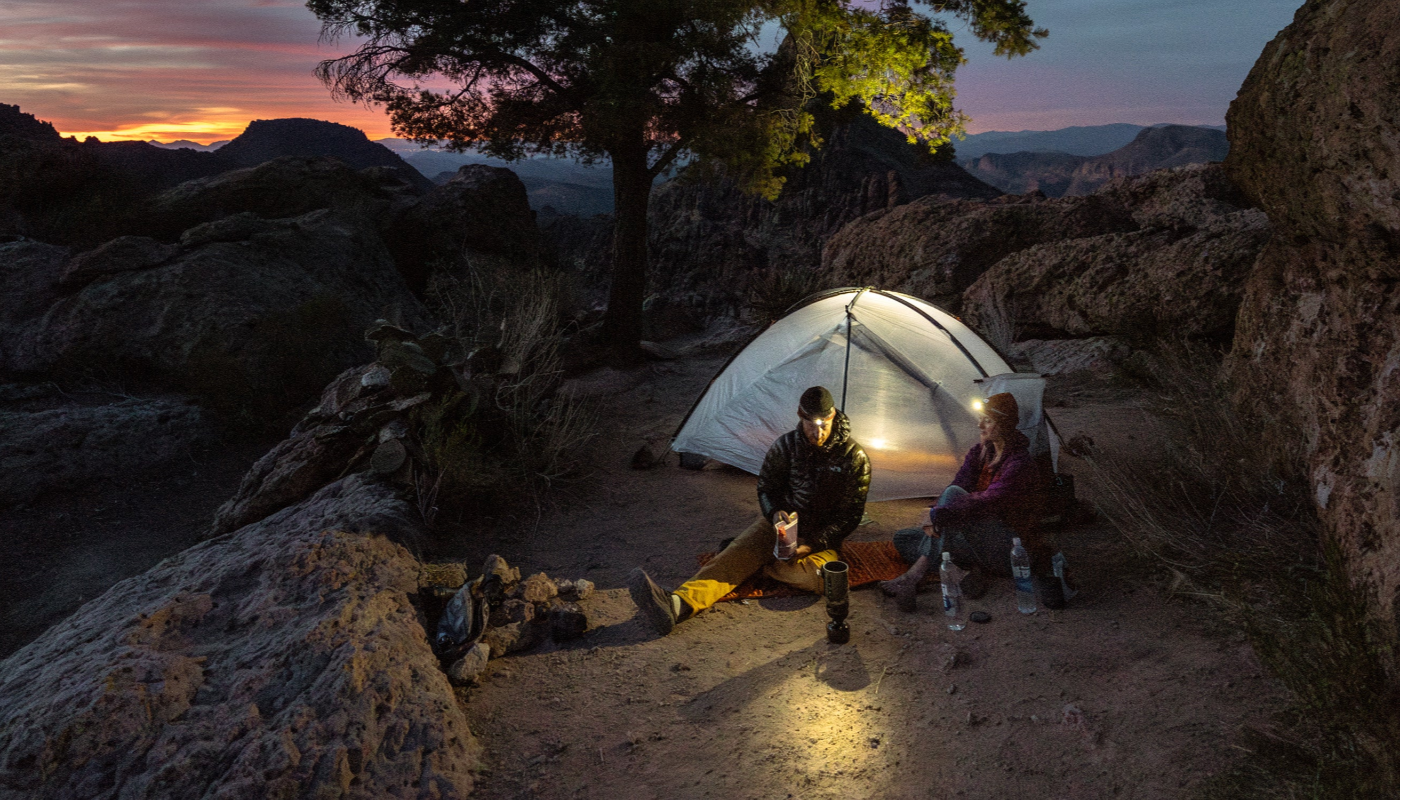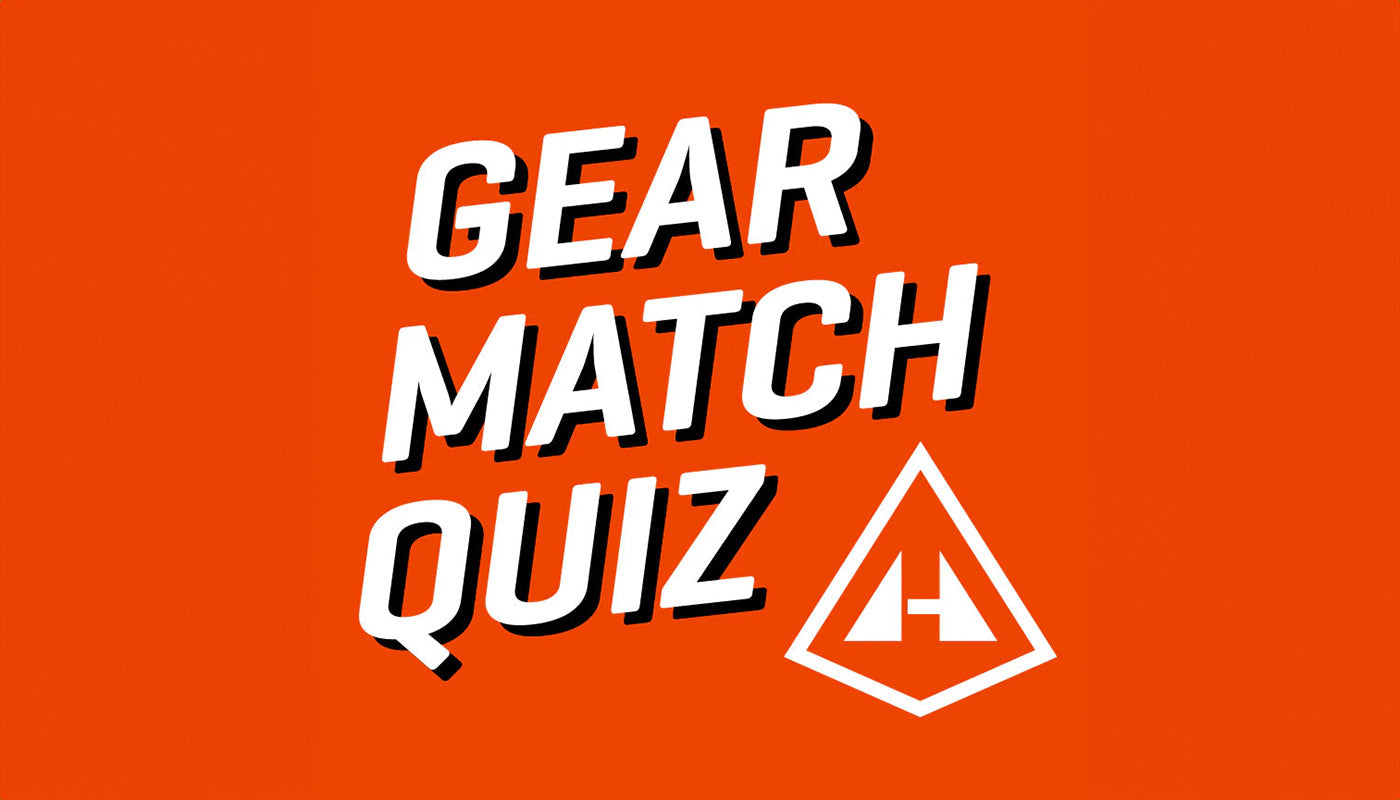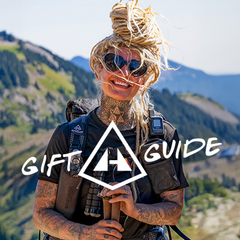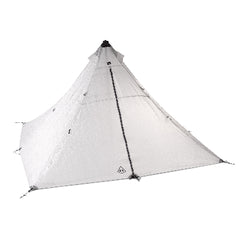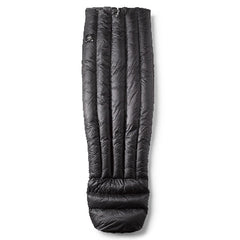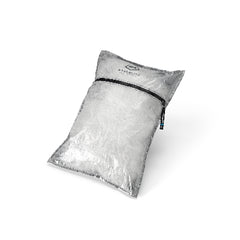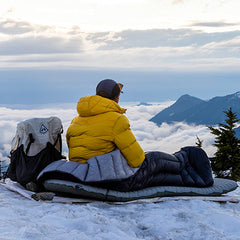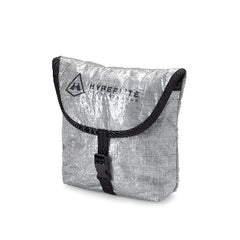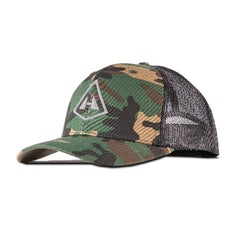Words and Photos by Sam Bugas, @swbugas
 I’m afraid to tell him that I feel a heat in my chest, that each breath is more labored than the last. I barely remember the last few hours of hiking, and it’s dawning on me that unless something changes, I won’t make it through this trail. This could get bad, fast. I catch myself feeling guilt, as though this moment is a choice I’ve made, after all the years it took to get us here, to sit sick above 16,000 feet.
I’m afraid to tell him that I feel a heat in my chest, that each breath is more labored than the last. I barely remember the last few hours of hiking, and it’s dawning on me that unless something changes, I won’t make it through this trail. This could get bad, fast. I catch myself feeling guilt, as though this moment is a choice I’ve made, after all the years it took to get us here, to sit sick above 16,000 feet.
Nearly seven years ago, engrossed in runner’s high on a long run in Eastern Oregon, I was hit with a surge of inspiration- or maybe delirium. Long runs have a way of freeing my mind, offering the kind of space that daily life rarely affords. That day, lungs burning and thoughts racing, an idea surfaced: I wanted to plan a remote trek with my dad. I’m not sure where the instinct came from, but it felt essential - urgent, even - that we take on something big. Something uncomfortable. A mission that would strip away ease and expose us both to a new kind of vulnerability.
I finished the run, caught my breath, and called him.

In truth, I had the Cordillera Huayhuash in mind for years. The seed was planted after watching Touching the Void, a harrowing account of mountaineering survival set in those very peaks. Later, as photography took a stronger hold in my life, the Huayhuash grew from fascination to fixation. Images from the range tugged at me- not just for what they showed, but for what they didn’t. As is the power of photography, it was the unseen edges of the frames, the sleepless nights between them, the thin air between lens and landscape. Photos build a space that I desperately want to explore further, a feeling I try to create with my own photography.
My dad was immediately on board- more eager than I expected. We dove into logistics: airfare, porters, fitness, and the many details required for a two-week expedition in the Peruvian Andes. The Huayhuash Circuit would wind through some of the most dramatic mountain terrain in the world, skirting peaks that soar over 6,000 meters. I knew that for my dad, there would be pride in tackling this objective. Nearing 60 at this point, he wasn’t old, but most people don’t save their most challenging pursuits for later in life. He’d never been to that altitude, but it was clear from the start that he respected everything about this; a quiet fixation on his fitness simmered with our goal in mind.
And then everything stopped.

I’m no longer running. I’ve lost my breath. I have multiple toes turning purple, a severe cough, and a fixation on the news that the world is coming to its knees, forced there by covid, which in this moment is having its way with my immune system. To this day, five years later, my toe is still somewhat purple.
When we all began battling to stay healthy, I knew our trip would be cancelled in a matter of days. Months before, I felt a tightening in my chest as excitement fueled a wave of emotions. Now, I feel the same choked breath, but this time it’s because air is struggling to escape my beaten lungs. For the moment, the Huayhuash is the last thing on either of our minds.
Eventually, I moved back to Portland after abruptly graduating from college, my degree sent to me via a haphazard email. I started a career in finance and got a blue heeler puppy I named Sherpa. Still, the dream of the Huayhuash lived quietly in the background- a flicker in the fog. During hard days, my dad and I would talk about it- how the air would feel past 16,000 feet, where our packs would fall at day’s end.
Four years later, we finally stood at the trailhead.

By then, I’d gotten married and moved to New Zealand. My wife, Emily, my dad, and I all came together in Huaraz, buzzing with anticipation. Each year that had passed had added gravity to the journey. Whether we both believed this day would come or not, we’d kept motivation to stay fit. We acclimated around Huaraz, took a rogue taxi deep into the Andes on our fifth day, and began the trek. I largely kept my sickness to myself, convincing myself it would pass if I ignored it.

My plan didn’t work. My breath was short, and a painful heat was accumulating in my chest, ripping at me with each painful cough. I kept quiet as long as possible, stubbornly unwilling to admit that I might be too sick to continue - after all, this trip wasn’t just for me. Our packs, prototypes we were testing for Hyperlite, were wildly heavy with almost 60 pounds of trekking (and camera) gear. We were putting new features to the test for the HMG R&D team, and it was clear straight away that a true test was in store. Needless to say, the packs did their job, whether on our backs or on a mule’s - more on that later.

That first day, the landscape delivered. We took a lesser-traveled high route, walking numb to the weight of our packs, and absorbing views and isolation unlike anything we’d experienced. Eventually, we descended steeply towards camp one, picking our own path down the valley wall. We arrived at Lake Mitacocha by sunset, exhausted and awed. A fellow trekker would eventually mention that a hiker had died on our same descent two weeks prior. The weight of that would have elicited more from me, but I was increasingly sick, feeling distracted but desperate to enjoy our beautiful camp.

Day two hit like a wall. Under the looming shadows of Yarapaja, Rondoy, and Jirishanca, I pushed through nausea, tunnel vision, and the unmistakable signs of acute altitude sickness to reach the top of the first high pass. I knew I wouldn’t make it through the rest of the trail unless I recovered quickly. I navigated nausea, a tightening bout of tunnel vision, and a sense of guilt building like a pit in my stomach. Finally, I admitted that I couldn’t continue much further without serious risks, exacerbated by whatever virus was navigating my organs. If I could make it to Campesito Carhuacocha, our next camp at 14,000 feet (a relatively low point considering the next several days), I may be able to start recovering. Fingers crossed that a 24-hour cocktail of coca leaves, tea, and some father-son time would be enough to kick my illness. Otherwise, we’d be too short on supplies and time to make it through the full circuit.
Miraculously, it worked.


By day four, I felt something close to normal. We pressed on, past the Tres Lagunas, one of the most iconic stretches of the trek. Our Hyperlite prototype bags felt heavier than they had in the first few days– I remember feeling pride that we’d truly be testing them. Day four was a gruesome climb, and my dad and I took turns carrying a bag. We had to give the other to a local muleteer whom we paid to carry one to our next camp. My health may have been improving, but I wasn’t prepared to carry that weight for one of our biggest days. By the time we reached camp on day four, we were battered, with bouts of altitude sickness jumping between us like the virus in my lungs. That evening, unfortunately, may have been the one time in my adult life that I soiled my pants. The virus strikes again.

Each day thereafter, the Huayhuash revealed itself in full. Towering passes. Vanishing trails. Peanut butter and jam-filled tortillas eaten with cold fingers. But each challenge was paired with a quiet moment of awe- a lake glowing turquoise under the morning light, the eerie silence above 5,000 meters, the resilience in each other. For every moment of labored breathing, of hunting for a trail that seemed to vanish, there was always a serendipity, upended only by the realization that this wasn’t going to happen again. We felt conclusion in the distance, and while there may have been more false horizons than we hoped for, we would eventually drift from the mountain’s higher reaches to the valleys below, ending in a small town, on a small bus, heading back to our normal lives.

We made it.
The descent from the Santa Rosa Pass, the relentless climbs beyond Campesito Huatica, the war happening between a virus and each of my organs. Each day along the Huayhuash left an indelible mark. It’s a vulnerable experience to share your limitations with someone else, and on our ninth day, I got to see my dad push himself as hard as he ever has. Almost a year later, it’s hard to escape the limitations of the mind when grasping at the memories we made. Small memories fade away. Challenges that were once all-consuming are now foggy recollections, like stories I barely believe. Time is the battle between holding onto what has happened and what comes next. At least there will always be photos.

To live life with everything you need in a bag on your back is pure liberation. It’s absolute romance between your needs, your energy, and the path-or lack thereof-in front of you. There’s a bliss that builds, sometimes hidden by aching shoulders, cracking feet, and altitude-driven delirium, that somehow finds a way to fill the cavities of your mind like molten rock in the Earth’s crust.

When the trip has finished, and the heat has dissipated, you feel all those new pathways in your mind. For some reason, there’s a fondness that your self-imposed suffering can never outweigh. It’s the duality between a blissful memory and a memory that’s earned through absolute, maniacal persistence. In the end, the net sum is a pisco sour somewhere happy, new stories written in a journal, memories frozen in the files on your camera’s memory card and worn into the fabric of your bag.

